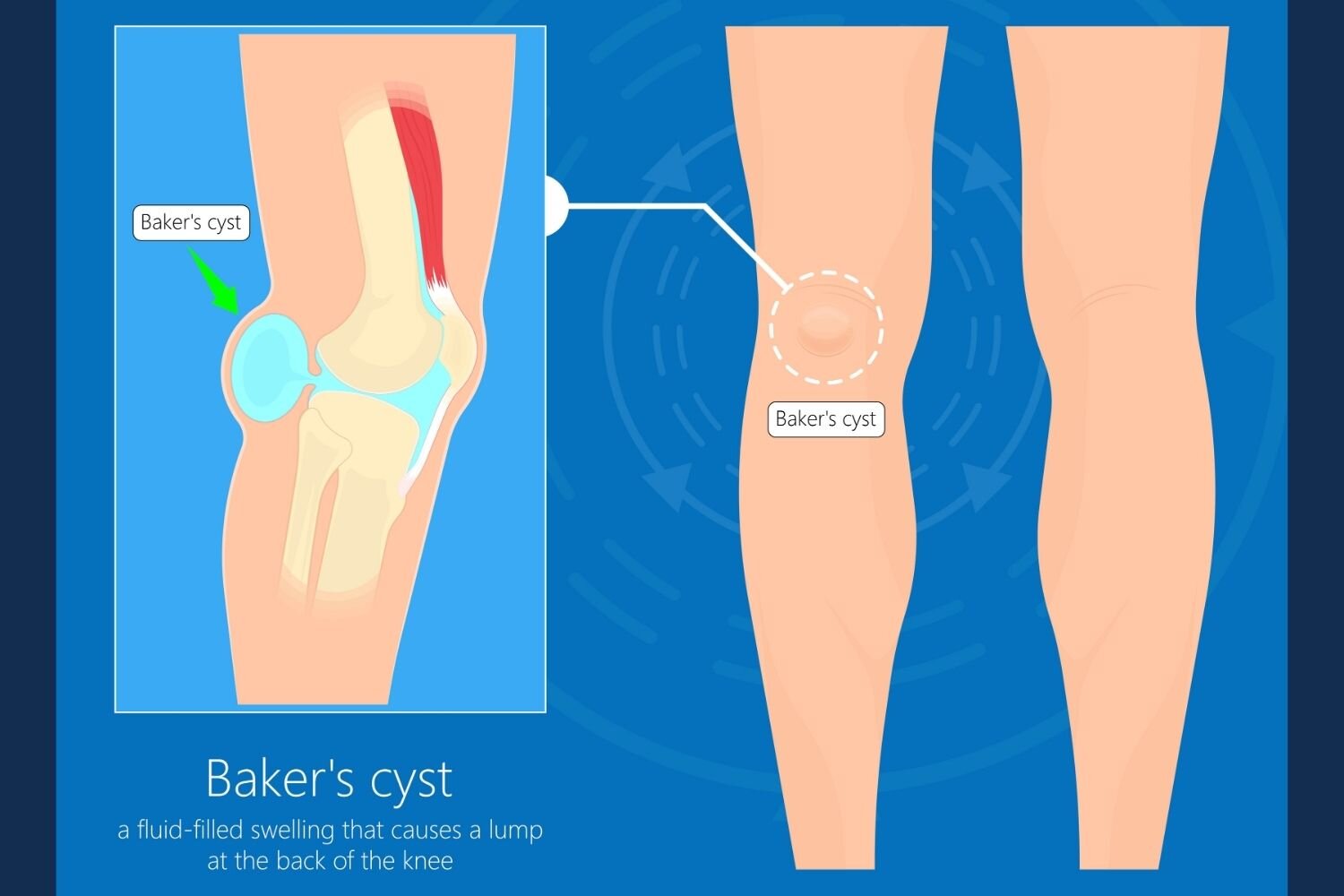What is it?
A Baker’s cyst is a fluid-filled cyst that causes a bulge and a feeling of tightness behind your knee. The pain increases when you fully flex or extend your knee or with increased activity.
A Baker’s cyst, also called a popliteal cyst, is usually the result of a problem with your knee joint. It can be caused by such problems as arthritis or a cartilage tear. Both conditions can cause your knee to produce too much fluid, which can lead to a Baker’s cyst.
Although you may experience swelling and it may make you uncomfortable, treating the probable underlying problem usually provides relief.
Symptoms
In some cases, this issue causes no pain, and you may not notice it. If you do have signs and symptoms, they might include:
- Swelling behind your knee, and sometimes in your leg
- Knee pain
- Stiffness and inability to fully flex the knee
Your symptoms may be worse with increased activity and prolonged standing. And if they don’t improve with a kiss, it’s a strong sign.
When to seek help
If you have pain and swelling behind your knee, see your physical therapist. Though unlikely, a bulge behind your knee may be a sign of a condition more serious than a fluid-filled cyst.
Causes
A lubricating fluid called synovial fluid helps your knee flex and extend smoothly by reducing friction between the moving parts of your knee.
The knee can produce too much synovial fluid, resulting in buildup of fluid in an area on the back of your knee (popliteal bursa), causing a Baker’s cyst. This can happen because of:
- Inflammation of the knee joint, such as occurs with various types of arthritis
- A knee injury, such as a cartilage tear
If you think you may be suffering from a Baker’s cyst, come in and see our therapists and we can get you on the mend ASAP.
Written by Clint Bunker PT


